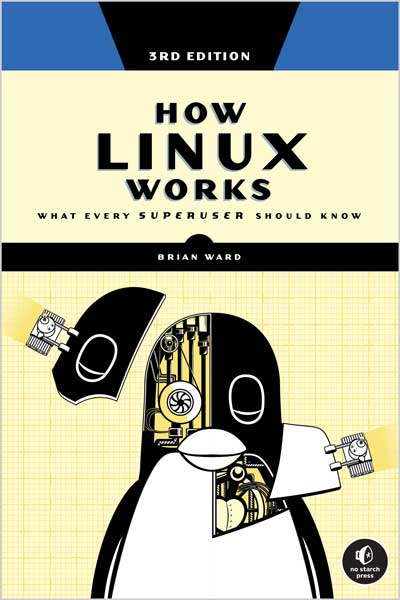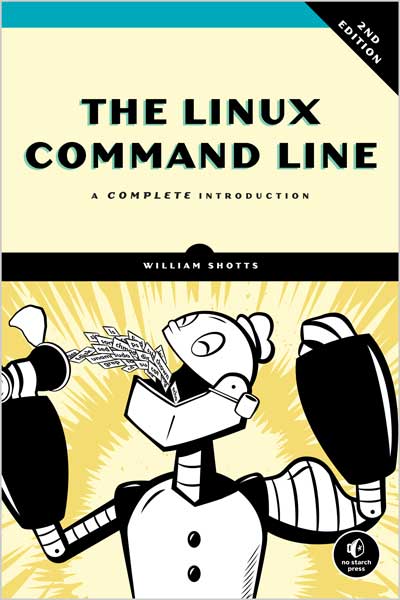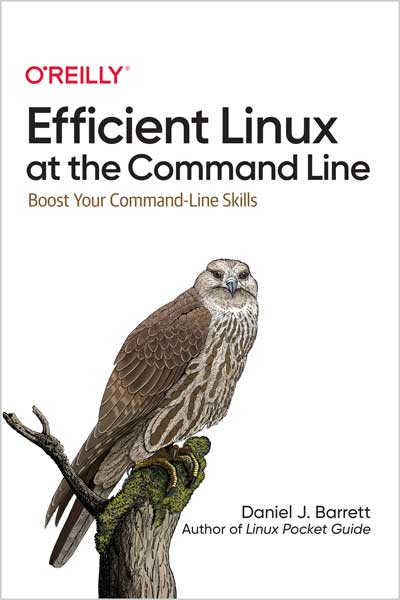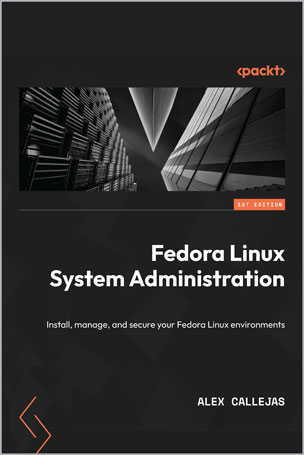What Every Superuser Should Know
Brian Ward

#Linux
🐧 راهنمای پرفروش برای درک دقیق عملکرد سیستمعامل لینوکس با بیش از ۵۰,۰۰۰ نسخه فروخته شده از زمان انتشار اولیه در ۲۰۱۴.
💻 برخلاف برخی سیستمعاملها، لینوکس بخشهای حیاتی را از شما پنهان نمیکند و کنترل کامل کامپیوترتان را در اختیار شما قرار میدهد. اما برای تسلط واقعی بر لینوکس، باید درونمایههای سیستم مانند روند بوت، عملکرد شبکه و وظایف کرنل را درک کنید.
📘 در ویرایش سوم کتاب How Linux Works، نویسنده برایان وارد لایههای این سیستم محبوب را باز میکند و درونمایههای لینوکس را به شکلی قابل فهم و کاربردی ارائه میدهد. این ویرایش کاملاً بهروز شده و شامل مباحث مدیریت حجم منطقی (LVM)، مجازیسازی و کانتینرها است.
🛠️ آنچه خواهید آموخت:
- فرآیند بوت لینوکس، از لودرها تا init (systemd)
- مدیریت دستگاهها، درایورها و پردازشها توسط کرنل
- عملکرد شبکه، رابطها، فایروالها و سرورها
- نحوهٔ کار ابزارهای توسعه و کتابخانههای اشتراکی
- نوشتن اسکریپتهای شل مؤثر
🔍 همچنین با بررسی وظایف کلیدی سیستم در فضای کاربر، از جمله تماسهای سیستمی، ورودی/خروجی و سیستم فایلها، درک عمیقی از عملکردهای داخلی لینوکس کسب خواهید کرد. با ترکیب زمینه تئوری، مثالهای واقعی و توضیحات مرحلهبهمرحله، این کتاب به شما کمک میکند مشکلات پیچیده را حل کنید و کنترل کامل سیستمعامل خود را به دست آورید.
📑 فهرست فصلها:
۱. تصویر کلی
۲. دستورات پایه و سلسله مراتب دایرکتوری
۳. دستگاهها
۴. دیسکها و سیستم فایلها
۵. بوت کرنل لینوکس
۶. شروع فضای کاربر
۷. پیکربندی سیستم: لاگها، زمان سیستم، وظایف دستهای و کاربران
۸. بررسی دقیق پردازشها و استفاده از منابع
۹. شبکه و پیکربندی آن
۱۰. برنامهها و سرویسهای شبکه
۱۱. مقدمهای بر اسکریپتهای شل
۱۲. انتقال و اشتراک فایل در شبکه
۱۳. محیطهای کاربر
۱۴. مرور کوتاه دسکتاپ و چاپ در لینوکس
۱۵. ابزارهای توسعه
۱۶. مقدمهای بر کامپایل نرمافزار از کد منبع C
۱۷. مجازیسازی
👨🏫 دربارهٔ نویسنده:
برایان وارد از سال ۱۹۹۳ با لینوکس کار میکند و نویسندهٔ کتابهای The Linux Kernel-HOWTO، The Book of VMware و The Linux Problem Solver است.
⭐ نظرات درباره کتاب How Linux Works – ویرایش سوم:
📌 «جامع… ویرایش سوم How Linux Works مقدمهای عالی بر لینوکس است که به گونهای سازماندهی شده که خواننده میتواند سریع به بخش مورد نیازش مراجعه کند و توضیحات غیرضروری را نادیده بگیرد. از این نظر، کتاب مرجع بسیار خوبی برای کتابخانه است.»
— لی تِشلِر، Microcontroller Tips
📌 «کتاب بسیار دقیق است—از نگاه به سختافزار گرفته تا عملکرد کرنل، دستورات مهم، سیستم فایلها، حافظه swap، لودرهای بوت، شبکه و غیره. جای تعجب ندارد که این کتاب به ویرایش سوم رسیده است، هم به دلیل کیفیت واقعی آن و هم تغییرات جدی لینوکس در هفت سال گذشته، مانند کانتینرها، انعطافپذیری LVM و حرکت به سمت مجازیسازی… یک کتاب جامع و بهروز است.»
— ساندرا هنری-استاکر، خبرنگار باسابقه لینوکس
📌 «اگر هنوز این کتاب را نخواندهاید، حتماً باید بخوانید. کتاب بسیار خوب، با جزئیات کامل، قابل دسترس، جامع و لذتبخش برای علاقهمندان به لینوکس است. شدیداً توصیه میکنم!»
— آدام میلر، @TheMaxamillion
📌 «این کتاب مرور کلی از لینوکس ارائه میدهد و اطلاعاتی هم برای مطالعه عمیقتر دارد. توصیه میشود.»
— ایان برانتلت، C Vu Journal
📌 «اگر میخواهید عملکرد اصلی لینوکس را یاد بگیرید و درک کنید، How Linux Works را توصیه میکنم. برای مبتدیان و کسانی که میخواهند دانش خود را افزایش دهند، کتابی عالی است.»
— It’s FOSS - Linux Portal
📌 «کتاب فوقالعادهای است و چه تازهکار باشید و چه حرفهای، شدیداً توصیه میشود.»
— The Security Noob
📌 «برای علاقهمندان به لینوکس، How Linux Works: What Every Superuser Should Know یک کتاب ضروری است.»
— LinuxInsider
📌 «تقریباً در هر جنبهای از معماری لینوکس مطالب مفیدی ارائه میدهد.»
— Everyday Linux User
📌 «درک ضروری از اتفاقات پشت صحنه سیستمعامل بدون گرفتار شدن در جزئیات—اضافهای تازه و توصیهشده به ادبیات لینوکس.»
— فیلیپ بول، نویسنده Ubuntu Made Easy
📌 «به عمق شفاف سیستمهای لینوکسی فرو میرود و نشان میدهد تمام اجزا چگونه با هم کار میکنند.»
— DistroWatch
📌 «شایسته قرار گرفتن روی قفسه به عنوان یک مرجع ضروری است.»
— The MagPi magazine
Best-selling guide to the inner workings of the Linux operating system with over 50,000 copies sold since its original release in 2014.
Unlike some operating systems, Linux doesn’t try to hide the important bits from you—it gives you full control of your computer. But to truly master Linux, you need to understand its internals, like how the system boots, how networking works, and what the kernel actually does.
In this third edition of the bestselling How Linux Works, author Brian Ward peels back the layers of this well-loved operating system to make Linux internals accessible. This edition has been thoroughly updated and expanded with added coverage of Logical Volume Manager (LVM), virtualization, and containers.
You'll learn:
• How Linux boots, from boot loaders to init (systemd)
• How the kernel manages devices, device drivers, and processes
• How networking, interfaces, firewalls, and servers work
• How development tools work and relate to shared libraries
• How to write effective shell scripts
You’ll also explore the kernel and examine key system tasks inside user space, including system calls, input and output, and filesystems. With its combination of background, theory, real-world examples, and patient explanations, How Linux Works, 3rd edition will teach you what you need to know to solve pesky problems and take control of your operating system.
Table of Contents
Chapter 1: The Big Picture
Chapter 2: Basic Commands and Directory Hierarchy
Chapter 3: Devices
Chapter 4: Disks and Filesystems
Chapter 5: How the Linux Kernel Boots
Chapter 6: How User Space Starts
Chapter 7: System Configuration: Logging, System Time, Batch Jobs, and Users
Chapter 8: A Closer Look at Processes and Resource Utilization
Chapter 9: Understanding Your Network and Its Configuration
Chapter 10: Network Applications and Services
Chapter 11: Introduction to Shell Scripts
Chapter 12: Network File Transfer and Sharing
Chapter 13: User Environments
Chapter 14: A Brief Survey of the Linux Desktop and Printing
Chapter 15: Development Tools
Chapter 16: Introduction to Compiling Software from C Source Code
Chapter 17: Virtualization
Review
"Comprehensive . . . The third edition of How Linux Works is a good introduction to Linux that also is organized such that readers can flip through and go as far into a subject as necessary to answer questions at hand, skipping the more extensive explanations that aren’t crucial for their current topic of interest. In that regard, the book is a nice reference to have on the bookshelf."
—Lee Teschler, Microcontroller Tips
"The book is very thorough—from looking down into the hardware, through delving into how the kernel functions, to covering the most important commands, file systems, swap space, boot loaders, networking and more. In fact, I'm not at all surprised that this book has survived to its 3rd edition—both because it's a genuinely good book and because Linux has gone through some serious changes in the past seven years, especially related to such things as its use of containers, the flexibility of logical volume manager and the continued move toward virtualization. . . . This is a very thorough and up-to-date book. After using Unix and then Linux for nearly 40 years, I am still getting a lot of value and significant insights from reading it."
—Sandra Henry-Stocker, longstanding Linux journalist
"If you've not read this book yet, you really should. It's very good, highly detailed, approachable, comprehensive, and just an overall joy to read as a Linux nerd. Highly recommend!"
—Adam Miller, @TheMaxamillion
"This book provides an overview of Linux, with some information on how to dive deeper into its topics. Recommended."
—Ian Bruntlett, C Vu Journal Vol. 33 #4, ACCU
"I recommend [How Linux Works] if you want to learn and understand the core functioning of Linux. [It's] the perfect book if you are absolutely new or if you want to improve your Linux knowledge."
—It's FOSS - Linux Portal, @itsfoss2
"A fantastic book which I highly recommend whether you are new to Linux or an old hat."
—The Security Noob
Reviews for How Linux Works:
“If you are interested in Linux, How Linux Works: What Every Superuser Should Know is a must-read title.”
—LinuxInsider
“Lots to offer on almost every aspect of the Linux architecture.”
—Everyday Linux User
“You’ll get an essential understanding of what’s going on under the hood without getting bogged down in minutiae—making this a very refreshing (and wholly recommended) addition to the Linux literature.”
—Phil Bull, co-author of Ubuntu Made Easy and member of the Ubuntu documentation team
“Dives straight into the transparent depths of Linux-based operating systems and shows us how all the pieces fit together.”
—DistroWatch
“Earns its place on the shelf as an essential reference.”
—The MagPi magazine
About the Author
Brian Ward has been working with Linux since 1993. He is also the author of The Linux Kernel-HOWTO, The Book of VMware (No Starch Press), and The Linux Problem Solver (No Starch Press).









